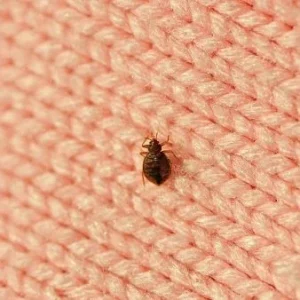

In the 1940s, we nearly eradicated bed bugs. Between 1980 and the early 2000s, bed bugs began returning more frequently to people’s homes but not at the elevated rate seen in recent years. Today, nearly one in five households in America will experience a bed bug infestation. It’s easy to wonder what could be causing this resurgence. So, let’s delve into the top reasons bed bugs have made a comeback and what to do about it:
The regulation of pesticides
In the 1970s, the Environment Protection Agency banned DDT, an organophosphate pesticide, due to the adverse effects it caused on the environment and human health. Interestingly enough, some countries still use DDT for the control of malaria-spreading mosquitoes.Unfortunately, after the ban of DDT in the US, bed bug treatment options were less effective, and the insects also developed a resistance to less toxic pesticides. Fast forward to the 21st century, and we’re still creating more successful treatments and methods for bed bug removal. Fortunately, despite bed bugs being a widespread problem, there are powerful and safe ways to rid these parasitic creatures from a home or business.
An increase in traveling
Scientists also argue that the resurgence of bed bugs continues due to the increase in worldwide travel. Bed bugs are accomplished hitchhikers. They move from linens to humans and so on. In the last four decades, the ease and speed of travel allowed bed bugs to move swiftly without much resistance. Heightened travel from developing nations to developed countries could explain why more of these blood-sucking insects are showing up in American homes.
Thriving breeding habits
Female bed bugs lay between 200 and 300 eggs in their several-month-long lifetime. Their eggs hatch within two weeks, and an adult bed bug reaches maturity at around five weeks. Compared to an African ant that produces more than 3 million eggs in a month, the bed bug seems relatively harmless. Yet, according to research from the Entomol Ornithol Herpetol, one pregnant adult becomes 31,700 bed bugs in six months. Breeding habits that thrive in warm climates also lend to admirable nymph or baby bed bug numbers.
Bed bug prevention
Improving education around bed bugs and treatments continues to help the bed bug population decrease. Nevertheless, the best way to stop an infestation is through prevention. Here are some ideas you can implement today to reduce the chance of a bed bug infestation in your home:
-
Inspect any second-hand furniture for signs of bed bugs.
-
Limit clutter throughout your home or business.
-
Vacuum and dust regularly.
-
Be careful at the laundromats and fold items at home rather than on shared surfaces.
-
Inspect luggage racks at the hotel and your belongings before returning home.
-
Use a tear-proof protective mattress covering.
-
Add sweeps to doors to limit travel between units in an apartment building or a multi-family home.
-
Seal holes or cracks throughout the home.
If you have bed bugs and have tried do-it-yourself methods to no avail or want them removed quickly, do not hesitate to contact a professional bed bug specialist. Though many pest control companies debate over the most effective methods, the first step to removal is a thorough inspection. Keep in mind, bed bugs are a global problem, and relieving your home of an infestation is more accessible and straightforward than ever.
Bed Bugs Arizona offers a free, in-home bed bug inspection and a one-year warranty on all bed bug services. No obligation. We specialize in apartment communities. Our fast, certified technicians provide the Bed Bug Pro-Treat Plus method of bed bug removal to Phoenix and surrounding cities in a 100-mile-plus radius, including Flagstaff, Globe, and Casa Grande. Veteran and senior discounts. Call now at (623) 451-0541.
